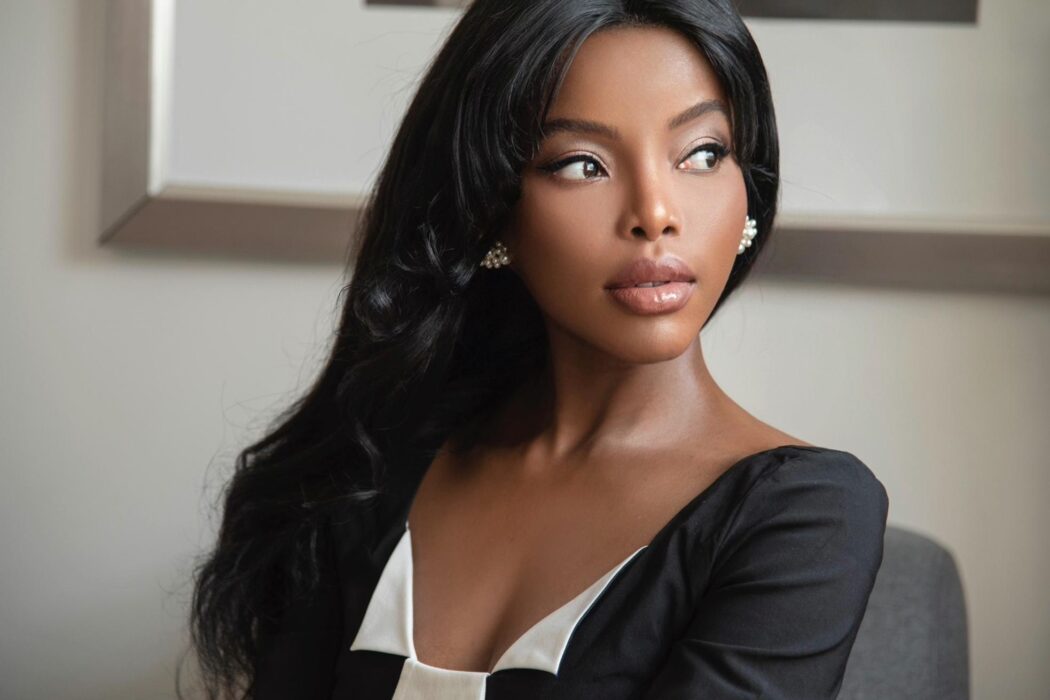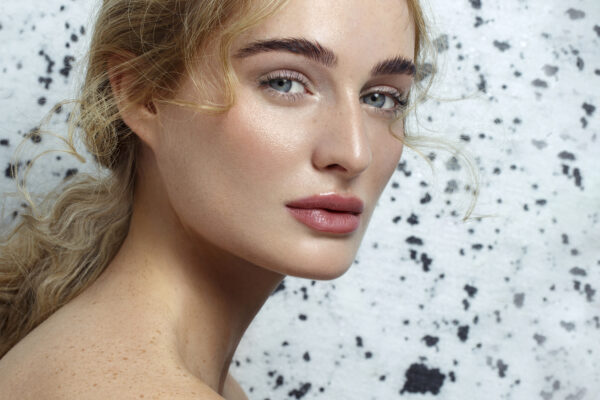A Perspective By Portia Antonia Alexis
Science is the key to unlocking many truths in marketing. Fashion is a billion dollar industry that caters to all sorts of demographics. People use retail as an outlet to satisfy needs within them for various reasons: leisure, sociability, entrepreneurship, and even stress relief. Yes, ‘retail therapy’ is real, and could be attributed to neuromarketing. The up-and-coming young shoppers, the ones called the HENRYs (high earners not rich yet), are the new wave of consumers. They are a market who knows what they want and expect a certain level of awareness from retailers when it comes to business and sustainability. Due to this, luxury retailers are now adopting new ways of branding. Neuromarketing is the best way for high-end brands to understand what drives their customers, not to only shop, but become loyal buyers for life. There has to be an evolution of fashion. More technological advances are being discovered every day. Part of that advancement is neuroscience. Luxury fashion brands have to look beyond the obvious and start reassessing their business structure to accommodate the new savvy consumer. No longer is shopping simply just selling; it’s about cultivating relationships. There is a subconscious trust that needs to be established. Diving deeper into consumers’ minds – and understanding why they love to shop – is key to brand longevity.
Neuromarketing is the key
Simply put, neuromarketing is the most advanced way to sell goods. Science has proven that emotions play a key role in decision making: the association with an experience or physical feeling. Neuroscience is more accurate for researching too. For example, when compared to focus groups and surveys, there’s less influence from outside distractions and greater insight of internal workings. Researchers have found that, if businesses brand themselves well enough, the very mention of their brands name could initialise a brain positive response. The fashion industry was among the last to use neuroscience, which is shocking due to the various reasons people shop. There’s a rhyme and reason to fashion – and neuroscience proves that.
Luxury brands don’t play with consumers’ emotions; they cater to them. There are certain methods that were naturally impressed on loyal buyers from the start. Well-known brands such as Gucci, Prada, Hermés, and countless others have created mission statements that captured their visions: quality, exclusivity, and lasting style. It’s no wonder why the HENRYs love luxury. These are the consumers who will impact the luxury market of the future. This demographic is definitely triggered by emotional issues impacting the environment and humanity. The state of the world is what drives them to invest in luxury. This is an easy way to utilise neuromarketing to garner brand loyalty – by showing evolution and inspiring positive change in the world. Relating to them in a genuine way is sure to encourage the new luxury consumer to shop and continue to buy the most. HENRYs want to feel confident in style through brand awareness. Luxury brands that have been around for years are now finding that revamping their mission statements and values are going to be a must in order to survive the new norm of fashion.
Who are the HENRYs?
Generally, they are a demographic of young up-and-comers approaching their late 30s and 40s; consumers that have matured into career focused individuals, who earn upwards in the $85,000.00 to $100,000.00 range. The millennials are fast approaching their turn to become a HENRY. There are already many shoppers who classify as a HENRY and are very affluent. They will continue their high-earning positions, which means they want goods and amenities that fulfill their comfortable lifestyle. It is clear how luxury brands can capitalise on this.
These consumers invest heavily in technology. They use it everyday: cooking, travel, communication, and of course shopping. Research is something they do on a regular basis. To them, clothing isn’t just fashion, but an extension of their beliefs and personal brand. The HENRYs market is the most intelligent consumer market to date. They understand the world around them; they are creating it. And they are now creating a new world, which centers around all inclusive, eco-friendly, and humane life focuses. HENRYs inspire change; they challenge the classic and new fashion industry veterans to produce goods that they can resonate with. Neuroscience can monitor their moves: what makes them tick, shopping habits, and more.
Luxury is something they fully embrace, but only if they are aligned with a certain belief system. HENRYs have the power to humble brands and impact fashion in a way which benefits all that are associated with the industry. It’s a nice domino effect: the positivity impacts the present and future of fashion. They are forward thinkers; everything they do, fashion-wise, sends a message of freedom in every way imaginable. This growing wave of free thinking, love-embracing, energetic, and courageous consumers will want existing brands to inspire their support. They regale the classic luxury brands and aim to transform their style into the now. What exactly do luxury brands need to know in order to satisfy the needs of this highly anticipated and growing consumer market?
What luxury brands need to know
Luxury brands need to understand how important it is to embrace change. It’s all around us: global pandemics, social unrest, BLM. Evolution is inevitable, and therefore, so is change. Brands must start looking closely at what triggers their customers neurologically. If a luxury brand aims to encourage loyalty, they will do so accordingly. For example, Hermés rejects mass production and mechanisation. Luxury brands that focus on producing clothes that are custom, high quality, personalised, and of limited quality are sure to be embraced by the HENRY consumer. There is one exception though – brands will still have to adhere or convert to the HENRYs lifestyle and beliefs. Luxury brands must become more ethical and sustainable.. This group’s decision making is heavily influenced by their ideals. They are ethical, environmentally conscious, pro animal welfare, and support humane labor practices. Neurologically, these trigger HENRYs emotionally. Emotions rule consumer behaviour and play a major role in purchasing decisions, even though we imply to be rational thinkers. But when open to many products all around us, the decision depends on the impact the brand has on society and the respect an individual gives to that particular brand.
Luxury brand COACH is well aware of this theory. They released their COACH X Disney Princess collection, which features all the classic fairy tale princesses of the past, up to now. They created accessories that trigger a delightful nostalgic feel in their customers. What woman didn’t enjoy going to see a Disney movie as a child? We even have our favourite princesses. That’s a genius way to sell products that are high-end to both their existing and future clientele: the HENRYs.
The evolution of fashion
The luxury goods market is truly unique. Millennials and the existing HENRYs want to support Chanel, Gucci, Hermés and other brands like them. It’s truly remarkable. It shows that although they are young, they too appreciate the effort and history behind classic luxury. The only aspect of concern is staying true to the brand’s mission. Classic luxury brands may not have been so vested in animal welfare. Many still use animal skins and furs to produce their goods. If neuroscience is to help a brand thrive, then sacrifices must be made – but not at the expense of others. Pain and suffering of any person or living creature does not sit well with millennials and HENRYs. That could trigger a negative response, and show lack of interest on the brand’s part; understanding what the customer views as important. The future savvy consumer may be turned off by their feelings not being acknowledged.
Disregarding consumer opinions will certainly doom a brand. Evolution in fashion is necessary. Brands like Burberry and Tiffany are great examples of luxury brand evolution. Burberry is expanding their practice of recycling unsold products, and Tiffany will be sourcing metals and diamonds from ethically responsible mining companies. Installing sustainability as part of an evolved action plan for a brand may be challenging. Hermés, for example, is known for their handmade bags made with fine crocodile leather. Changing that aspect of a brand, like the use of animal products, will jeopardise their legacy. How Hermés can evolve is by pivoting their focus: offer goods that are sustainable alternatives. That way, people who love the brand can still enjoy their goods. Meanwhile the new consumers have options that resonate with their ideals and represent them. Feeling or belonging to a certain class is desired by everyone. Pivoting will make them inclusive. Hermés uses that concept in their marketing. And it reinforces brand loyalty using three major pillars: creating a sense of belonging, making it a routine, and building trust.
When a brand can link their goods to a specific experience, emotion or ideal, then they can turn customers into loyal shoppers. Appealing to the new and most prominent shoppers will secure a future for luxury brands in general. HENRYs shape the world, and so luxury must find where they fit in.
The overall sensibility of luxury is to be in a state of great comfort and lifestyle. Fashion is the easiest way to accomplish this. The physical representation of luxury is no way as impactful as the mentality. Neuroscience is the next big key to revolutionising fashion. Luxury brands are now able to influence shoppers subliminally by tapping into emotions and subconscious desires. Some may think neuroscience is controversial, but really it’s simply moving with the times. E-commerce is becoming more fast-paced and digital. When shopping online, people tend to shop impulsively, which is driven by emotion. Neuromarketing is, in a way, the science of emotion. Luxury brands need to be aware of the new advents in marketing, and the trends that will sustain them for the future.
All shoppers can benefit from wearing an exclusive item associated with living abundantly. High-end brands put shoppers in a mode of sophistication. Luxury fashion is mature and elegant. Although their markets are small and intimate, they’re impactful. If a brand strives to expand their clientele, then neuromarketing will be a key factor. Most fashion brands are already using it, and have even developed in-house neuroscience labs dedicated to better understanding consumer behaviour. It will also help luxury brands assess what else they could create to draw positive attention to their brand at every angle. Only time will tell the extent of neuroscience and how far it will go. For now, though, it will continue to serve as a small window into the psyche of retail shoppers.


